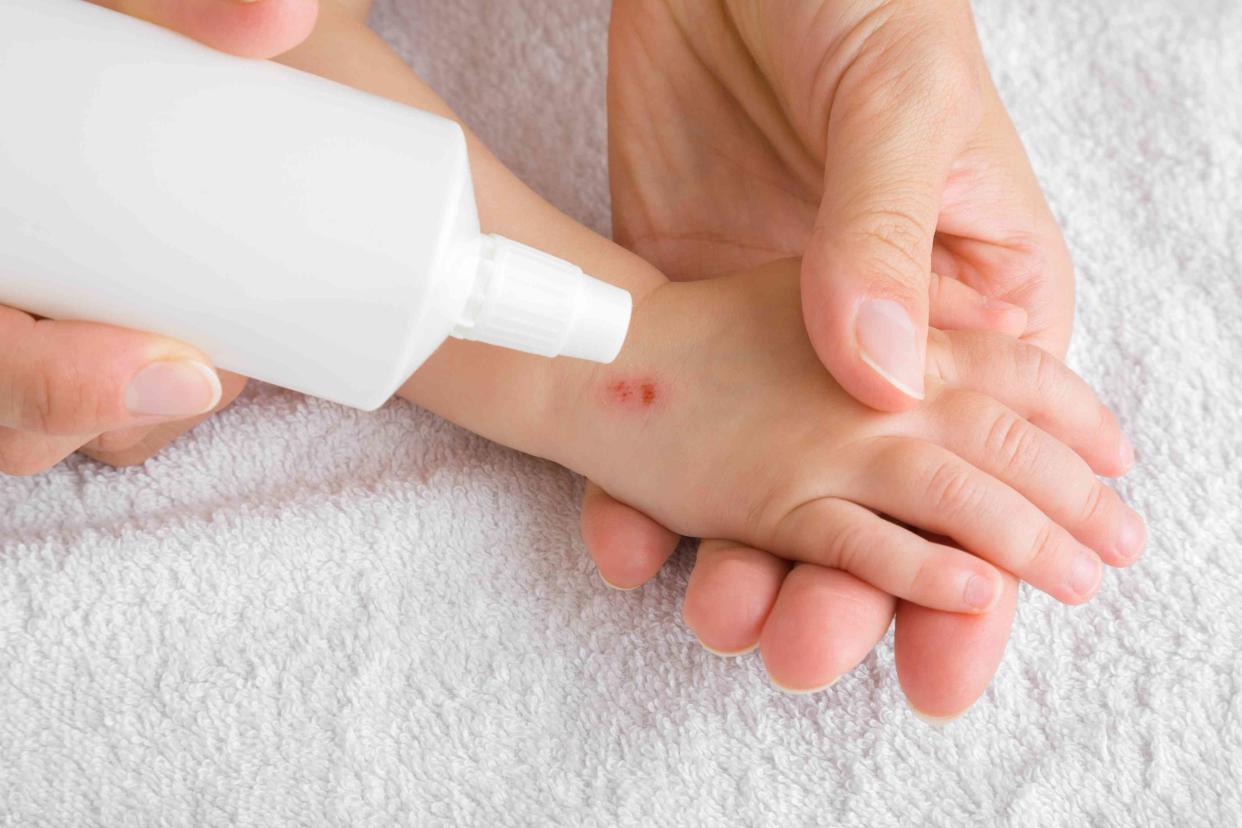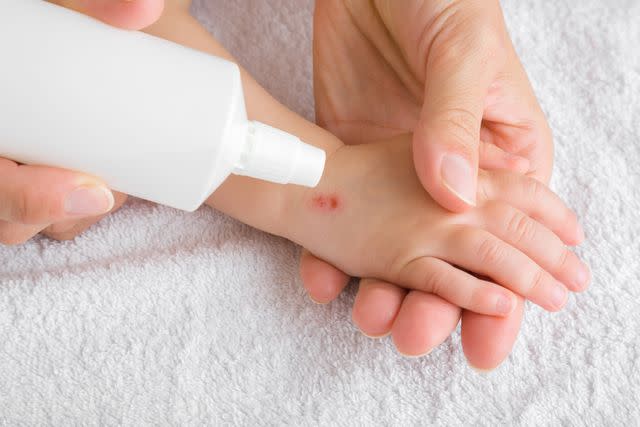What Are Examples of Antiseptics?

FotoDuets / Getty Images
Medically reviewed by Paria Sanaty Zadeh, PharmD
Antiseptics are antimicrobial substances applied topically to the skin to prevent or slow the growth of microorganisms, such as bacteria and viruses, that cause infections and diseases. Disinfectants are different from antiseptics in that they destroy microorganisms found on nonliving objects and surfaces.
There are two general categories of antiseptics: rubs and washes. They are found in pharmaceutical products such as creams, ointments, gels, gargles, and consumer products such as soaps and hand sanitizers. They are essential to controlling and preventing the spread of infections in hospitals and other healthcare settings.
This article discusses examples of antiseptics, their safety, and when their use should be avoided.

FotoDuets / Getty Images
What Does an Antiseptic Do?
When used on the skin and in other tissues, antiseptics kill and stop bacteria and viruses that can cause diseases or infections. Antiseptics protect healthcare workers and patients in settings such as hospitals, clinics, and skilled nursing facilities. When used as a consumer product, antiseptics typically protect the user.
Although the words “antiseptic” and “disinfectant” are often used interchangeably, they do not have the same meaning. Antiseptics are meant to be used on living tissue, such as the skin, while disinfectants are designed to sterilize nonliving objects and surfaces like floors and countertops.
While some of the same chemicals are used in antiseptics and disinfectants, antiseptics generally contain much lower concentrations of the active chemical agent.
Uses for antiseptics include:
Decreasing the risk of infection to a burn, cut, or wound
Cleaning hands when washing with soap and water is not available
Treating throat and mouth infections
Disinfecting mucous membranes in a medical setting
Treating urethra, vaginal, or bladder infections
Decontaminating exposed skin of personnel before entering a sterile site
Reducing the risk of infections during surgery
More Antiseptic Examples
The Food and Drug Administration (FDA) regulates antiseptics used in healthcare settings and sold over the counter to consumers. Some antiseptic agents used in healthcare products are not available in consumer products.
Antiseptic chemicals commonly used in healthcare and surgical settings include:
Chlorhexidine
Chloroxylenol
Povidone iodine
Isopropyl alcohol
Antiseptic agents commonly found in consumer over-the-counter (OTC) products include:
Benzalkonium chlorides: Antibacterial soaps and hand sanitizers, Bactine cleansing spray and other first aid sprays, Wet Ones wipes, and acne products
Ethyl alcohol: Purell hand sanitizer
Povidone iodine: Betadine first aid products, including gargles and OTC first-aid wipes
Isopropyl alcohol: Rubbing alcohol
Due to possible adverse health effects, the FDA regulates and has banned some ingredients in antiseptics. This is due to insufficient data to support their safety and effectiveness.
How to Apply an Antiseptic
Antiseptic products should always be applied according to the directions on the packaging. Antiseptic soaps and bodywashes should be used with water and rinsed off afterward. Antiseptic rubs, such as hand sanitizers and wipes, are meant to be left on the skin after use and should not be rinsed off with water.
While antiseptics and disinfectants can slow or stop the growth of many microorganisms, such as viruses, bacteria, and fungi, antibacterial products are designed to only slow or stop the growth of bacteria. Antibiotics are medications intended to be taken internally or applied to the skin and will kill or slow the growth of certain bacteria the drug is targeted to work on.
When Not to Use an Antiseptic
Antiseptic hand sanitizers and wipes should only be used when handwashing with soap and water is unavailable. That’s because while antiseptic products will kill some microorganisms on your hands, washing with soap and water will remove all the microorganisms and any other harmful substances on your hands.
An antiseptic can be used on wounds or cuts that are contaminated or infected but does not need to be applied to clean, noninfected wounds. While hydrogen peroxide is still commonly used as an at-home remedy, it is no longer routinely used in hospital settings because it may harm certain cells that help heal.
How Safe Are Antiseptics?
Antiseptic agents are subject to FDA regulation, and the agency works to ensure that evaluations of the safety and effectiveness of active ingredients are up to date.
While antiseptics are usually well tolerated, topical antiseptics can cause irritation and allergic reactions such as contact dermatitis. The risk of reaction increases in people with eczema and other skin conditions, or if the chemical agent is used at a too-high concentration.
Summary
Antiseptics are commonly used in both healthcare settings and by consumers to help prevent the spread of microorganisms and infections. Antiseptics are also sometimes used to treat some infections. Antiseptics contain many different chemical agents, all of which are subject to FDA regulations.
Antiseptics come in many forms, including soaps, sanitizers, creams, sprays, and wipes. Although generally considered safe, some topical antiseptics can cause allergic skin reactions.

